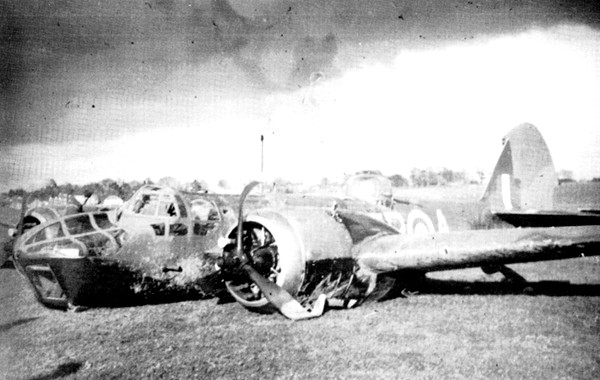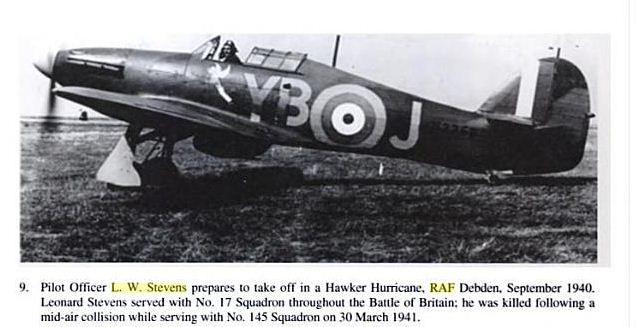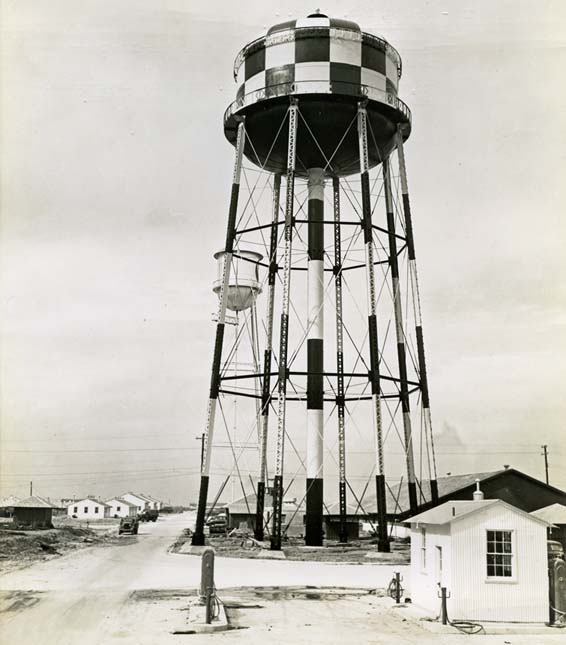Sunday 30 March 1941
Yugoslav Foreign Minister Momčilo Ninčić summons German ambassador Viktor von Heeren. Ninčić has a statement indicating that Yugoslavia will honor its international agreements, including the Tripartite Pact. Von Heeren prepares to send the diplomatic note on to Berlin when he receives instructions from Berlin to avoid any contact with Yugoslavian officials and to return to Berlin. It is unclear if von Heeren ever delivers the message, and Ribbentrop certainly never replies to it.
The Yugoslav Army begins deploying troops to the frontiers.
Deputy chief of the German General Staff (Oberquartiermeister I) Lieutenant General Friedrich Paulus arrives in Budapest for discussions with the Hungarian chief of staff. The chief of staff agrees to attack Yugoslavia. There is some confusion at the highest levels of the government, as Admiral Horthy approves of the attack, but Prime Minister Teleki is out of the loop entirely.
East African Campaign: General Lewis Heath's 5th Indian Infantry Division continues to pursue the fleeing Italian troops toward the port of Massawa. The 4th Indian Infantry Division has been redirected to Port Sudan for shipment to Port Sudan - showing the amount of confidence that Middle East Commander General Archibald Wavell has in a single division's ability to subdue the port's garrison.
The Italians in Massawa realize the fate awaiting them. Italian 7565 ton freighter Piave makes a run for it and heads for Assab.
In Addis Ababa, the Italian commander, the Duke of Aosta, also realizes what is happening. He messages Rome that he will resist for as long as he can.
The RAF loses at least one bomber during the Calais raid, TR-A of RAF No. 59 Squadron, which makes it back to RAF Hawkinge and crash-lands after losing hydraulics and throttle control. The crew survives, though two are wounded, one very seriously. The RAF also loses at least one Hawker Hurricane.
The Luftwaffe continues with its recent pattern of scattered raids by single planes. A Spitfire of RAF No. 41 Squadron shoots down a Junkers Ju 88 which lands at Wilton Moor, Eston, Yorkshire during the afternoon. All three Luftwaffe crew perish.
 |
| USS Gar, USS Grampus in the background, 30 March 1941. Photo courtesy of The US Navy Submarine Force Museum. |
U-124 (Kptlt. Georg-Wilhelm Schulz), on her fourth patrol and in the vicinity of the Cape Verde Islands, torpedoes and sinks 3767-ton British freighter/passenger ship Umona. There are 100 deaths, including 15 passengers. The Umona was carrying, among other things, jam, maize and similar goods that are in short supply in England.
British 210 ton trawler Nisus disappears near the Faroe Islands. There are many British minefields in the area, and it is a favored hunting ground for the Luftwaffe.
Dutch coaster Celebes disappears during a trip from Liverpool to Falmouth.
Royal Navy anti-aircraft ship Alynbank is back in action after repairs to its collision damage from 23 December 1940.
Convoy OB 304 departs Liverpool, Convoy SC 27 departs from Halifax.
 |
| USS Gar, with USS Grampus in the background, 30 March 1941. Photo courtesy of The US Navy Submarine Force Museum. |
The RAF raids Tripoli in the early morning hours, causing only slight damage. The Luftwaffe also is in action, claiming to have destroyed an armored car, self-propelled gun, and tanker.
The damaged freighter Ruhr, carrying men and vehicles for the Afrika Corps, is towed back to Sicily. Troop casualties on it are reportedly 30 men. The rest of the ships of 15th Naval Transport Squadron accompanying it are in Tripoli at 09:00.
Royal Navy submarine HMS Rorqual (Lt. Commander Dewhurst) torpedoes and sinks 3645-ton German freighter Laura Corrado about 40 miles (70 km) north of Trapani, Sicily.
The Vichy French send a convoy of six freighters, escorted by destroyer Simoun, from Casablanca back into the Mediterranean. This, of course, requires passage through the Straits of Gibraltar. The Royal Navy has had conflicting views on how to handle such transits in the past, leading to at least one court-martial. This time, the Royal Navy sends out a large force led by light cruiser HMS Sheffield to intercept the French. This is Operation Ration by Force H.
The French ships pass under the guns of their forces at Nemours, and the British are unable to intercept the convoy when the French open fire. On their way back, the Royal Navy ships are attacked by French aircraft. Sheffield is damaged by a near miss and destroyer HMS Forester is hit and requires four weeks of repairs.
Italian submarine Dagabur attacks cruiser HMS Bonaventure escorting Convoy GA-8 south of Crete but misses.
The victorious Royal Navy fleet, led by battleships HMS Barham, Valiant and Warship and aircraft carrier Formidable, arrives back at Alexandria around sunset.
At Malta, the Luftwaffe sends four Junkers Ju 88 bombers which bomb Ta Qali airfield. One Hurricane on the ground is slightly damaged, but overall it is an unsuccessful mission. Neither side loses any planes.
As part of Operation Fish, the heavy cruiser USS Vincennes (CA-44) departs Simonstown (Cape Town) carrying gold bullion being used by Great Britain to pay for war supplies. Its destination is New York.
Visiting Australian Prime Minister Menzies note that Churchill, elated by recent victories, has been communicating with President Roosevelt. Menzies, never one to mince words in his private diary, writes:
Great news of naval victory in Mediterranean at which Winston sends off cables to Roosevelt.... What a genius the man has. He has maintained by cable and letter the most easy and informal correspondence with Roosevelt; always treating him as a friend and ally, and also U.S.A - 'Don't you think we could do so and so.' Result, F.D.R. has passed into the position of an ally without perhaps realising how some of the steps have come about.While this entry is highly flattering of Churchill, it is not so high-minded about President Roosevelt.
Spy Stuff: Churchill learns through "sources" that the Wehrmacht has redirected three panzer divisions from Romania, thence to Southern Poland, and then further south. There, they will participate in the invasion of Yugoslavia. This crystallizes the belief in Churchill's mind that a German invasion of the Soviet Union is next on Hitler's list - after he takes care of Greece and Yugoslavia. The source of Churchill's knowledge is poor practices by a German Lorenz cipher machine operator, who sends the same 4000-character message twice.
 |
| USS Barnett (AP-11) McCawley-class attack transport off the Norfolk Navy Yard on 30 March 1941 (Photo No. 19-N-23945, U.S. Naval History and Heritage Command). |
Hitler directs that Army Group Center's mission was to head due east to the Dneiper River, and only then head north. Moscow, he casually mentions, is "absolutely irrelevant." This directly contradicts a very strong body of opinion among the men to whom he is speaking. They feel that Moscow is of the utmost importance as the entrance of the land bridge to Asia and the center of Soviet life (including the focus of the entire railway and road system). Nobody challenges Hitler on this strategy, but some in the room will make their own contrary views known eventually - and act on those views.
Hitler does not think the campaign will be much trouble. He thinks it will all be over by fall, declaring:
We have only to kick in the door and the whole rotten structure will come crashing down.Moving from the specific to the general, Hitler remarks on the ultimate objective of the campaign. It is not just the conquest of the Soviet Union, but the "eradication" of Communism itself "for all time." To do this, he authorizes "liquidation of the Bolshevik commissars and the Communist intelligentsia." As recorded by Halder, Hitler says:
The war against Russia cannot be considered in a knightly fashion; the struggle is one of ideological and racial differences and will have to be conducted with unprecedented, unmerciful and unrelenting harshness.... The commissars are the bearers of ideologies directly opposed to National Socialism. Therefore the commissars will be liquidated. German soldiers guilty of breaking international law... will be excused.John Keegan, The Second World War (Hutchinson, 1989), page 186. The liquidations would be carried out by SS Einsatzgruppen following behind the fighting troops.
After being translated into an official OKW order, this directive becomes known as the "Commissar Order." As Hitler indicates himself (according to the notes), it is illegal under the terms of the Geneva Convention of 1929. Some will argue the Convention does not apply to the Soviet Union because the USSR never ratified the Convention (though the previous Russian government had). Article 82 of the Geneva Convention, however, states:
In case, in time of war, one of the belligerents is not a party to the Convention, its provisions shall nevertheless remain in force as between the belligerents who are parties thereto.Thus, even if the USSR was not a party to the Geneva Convention, Germany, as a signatory at least arguably was bound to follow it (though, again, some will argue that it need be followed only in cases where both opposing governments, and not just one, have ratified it). The Geneva Convention, of course, forbids exterminating entire classes of captives. The OKW will begin working up its drafts of this order quickly.
Luftwaffe jet prototype Heinkel He-280 makes its maiden flight under its own power under the command of test pilot Fritz Schäfer. It features tricycle landing gear and a compressed-air ejection seat. The Luftwaffe has expressed little interest in the plane, preferring to focus on other designs, so Ernst Heinkel has been continuing with the plane's development on his own initiative. The main holdup is the engine, the HeS 8, which has been behind schedule. On the bright side, the engines burn inexpensive kerosene. The Luftwaffe, specifically RLM development chief Ernst Udet, remains uninterested. Heinkel views the Luftwaffe's failure to pursue this design as one of its biggest mistakes.
 |
| The Heinkel He 280. |
The first flight of the Vultee A-31 Vengeance prototype V-72 dive bomber. It takes place at Vultee's factory at Downey, California. The British Purchasing Commission, in need of a dive bomber, already has placed orders for 300 of them. The plane is well behind schedule, as delivers originally were scheduled to begin in October 1940.
Yugoslavia: With Belgrade in an uproar after the recent bloodless coup, Italian and German nationals have left.
Future History: Graeme Charles Edge is born today in Rochester, Staffordshire, England. He becomes a founding member of rock group Moody Blues alongside Denny Laine, Clint Warwick, Mike Pinder, and Ray Thomas. As of this writing, Edge is the only remaining original member of The Moody Blues still performing in the band.
 |
| The Heinkel He-280. |
March 1941
March 1, 1941: Rettungsboje
March 2, 1941: Oath of Kufra
March 3, 1941: Germans in Bulgaria
March 4, 1941: Lofoten Islands Raid
March 5, 1941: Cooperation With Japan
March 6, 1941: Battle of Atlantic
March 7, 1941: Prien Goes Under
March 8, 1941: Cafe de Paris
March 9, 1941: Italian Spring Offensive
March 10, 1941: Humanitarian Aid
March 11, 1941: Lend Lease Becomes Law
March 12, 1941: A New Magna Carta
March 13, 1941: Clydeside Wrecked
March 14, 1941: Leeds Blitz
March 15, 1941: Cruisers Strike!
March 16, 1941: Kretschmer Attacks
March 17, 1941: Happy Time Ends
March 18, 1941: Woolton Pie
March 19, 1941: London Hit Hard
March 20, 1941: Romeo and Juliet
March 21, 1941: Plymouth Blitz
March 22, 1941: Grand Coulee Dam
March 23, 1941: Malta Under Siege
March 24, 1941: Afrika Korps Strikes!
March 25, 1941: Yugoslavia Joins The Party
March 26, 1941: Barchini Esplosivi
March 27, 1941: Belgrade Coup
March 28, 1941: Cape Matapan Battle
March 29, 1941: Lindbergh Rants
March 30, 1941: Commissar Order
March 31, 1941: Cookie Bombs
2020



No comments:
Post a Comment